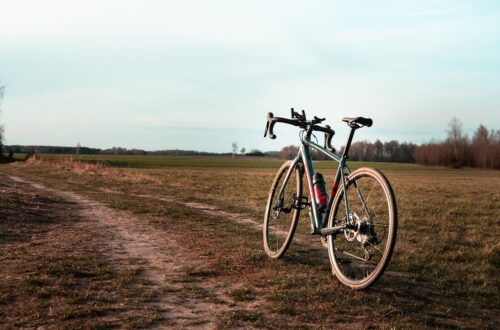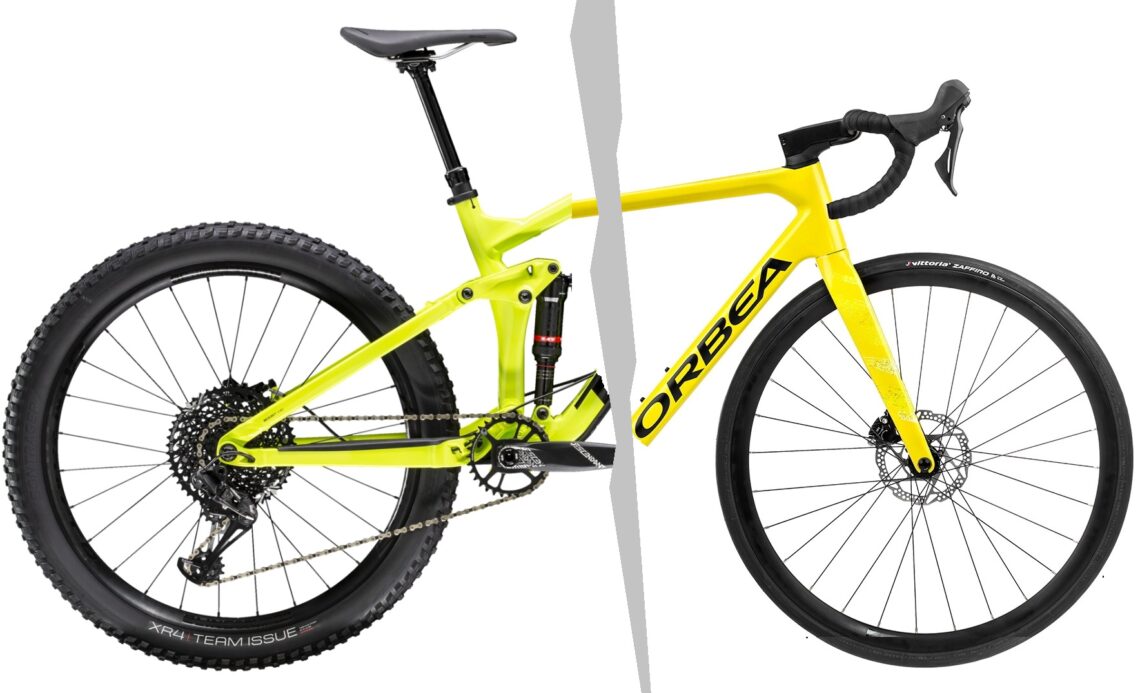
How To Convert Mountain Bike To Road Bike
There can be many reasons why you would want to convert a mountain bike to a road bike. Maybe you want to try road biking and have an old mountain bike laying around. Or maybe you want to switch from mountain to road biking without actually buying a road bike.
To convert a mountain bike to a road bike, you should switch to: slick tires, a larger front chain ring and a road bike handlebar. You should also lock up the suspension if possible. These modifications will lower the rolling resistance, increase the top speed and create a more aerodynamic riding position.
Whatever your reason is for wanting to convert a mountain bike to a road bike, in this article we’ll dive deeper in what you need to do to get to this stage. I’ve narrowed it down to adjustments you can make with basic technical knowledge and a low budget.
Road VS Mountain Bike: The Main Differences
Because you’ve landed on this page, you are fully aware that there are differences between a road bike and a mountain bike. The most obvious are the wheels and wheel size; the suspension (or lack of) and the handlebar. But there might be a few more differences that you haven’t thought about.
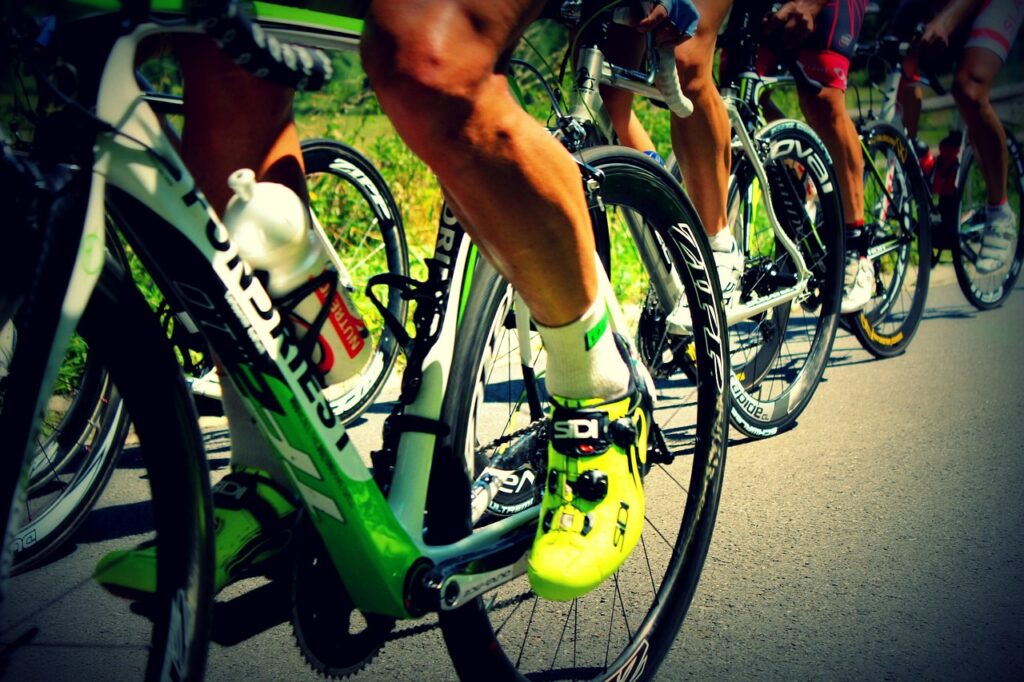
Weight
Mountain bikes in comparison to road bikes, have to be a lot more robust to be able to operate under heavy conditions. Except from added components like a suspension and sometimes a dropper post, the weight of the frame, wheels, tires and brakes is a lot higher. If we compare the weight of a mid range full suspension mountain bike to the weight of a mid range road bike, the difference is around 6 kg (15,7 kg and 9,7 kg).
Gearing
Road bikes generally ride faster than mountain bikes. The average speed of a mountain biker and a road biker is respectively 10 mph (16 km/h) and 17 mph (27 km/h). The average speed of a Tour de France participant, is 25 mph (41 km/h). These high speeds are not just achieved by reducing the bike’s weight; the gearing is different from a mountain bike. In comparison to a mountain bike, a road bike has a bigger chain ring in the front, and a smaller cassette in the back.
This all has to do with ‘cadence’, which is another word for the revolutions per minute of your crank. A good cadence in cycling is between 80-100 RPM. Trying to travel at 25 mph on a mountain bike in the highest gear is virtually impossible; your feet would be flying off the pedals.
Frame Geometry
Other than a lower weight and a different gearing, road bikes are also set up to be more aerodynamic than a mountain bike. The frame and forks of a road bike are a lot narrower, but the reach and top tube of the frame is longer. This makes up for a more stretched out and aerodynamic position of the rider on the bike.
Mountain bikes also have a slacker head tube angle which makes the bike longer and gives a more agile and stable feel at higher speeds on the trail.
How To Convert Mountain Bike To Road Bike
Now that we’ve talked about the fundamental differences which can’t be easily changed, let’s now look at what you can do with a low budget to get the road bike feel on a mountain bike.
Before getting the toolbox out, you should start with giving the mountain bike a deep clean and a check everything over to make sure you’ve got a good base to start with. Crank bearings, wheel bearings and the drive train have a hard life on a mountain bike. Get both wheels off the ground and check for excessive noise, play and vibrations. Make sure the drive train is turning freely and the chain, rear sprocket, derailleur jockey wheels and front chain ring are in good condition. You can use a chain checker to see if the chain still has some life left.
Switch To Slick Tires For Mountain Bikes
Mountain bike tires have a high rolling resistance because the knobs are the only point of contact with the road. Under off-road conditions, those knobs ‘bite’ into the surface to create grip. Riding on paved surfaces with mountain bike tires, will wear them out quickly and offer you less grip.
To reduce rolling resistance, you can switch to slicks, semi-slicks or gravel bike-tires. Some examples of great tires for paved roads are: Schwalbe G-One Speed, Michelin Wild Run’R and Maxxis Hookworm. You can find these tires for 26”, 27,5” and 29” wheels. Make sure that you don’t fit a tire that’s too narrow for the width of your mountain bike rim (inner width between the walls). You can fit a fit a narrower tire, but its width should not be too far off from the width of the mountain bike tire.
When comparing tires, don’t just look at the thread, diameter and width, but also look at the ‘TPI’ (Threads Per Inch). This number generally sits between 60 and 110, and tells you something about its rolling resistance and robustness. A higher TPI (>100) means less rolling resistance as this is a lighter tire, but will puncture easily. A tire with a TPI of around 60 has a good balance between robustness and rolling resistance.
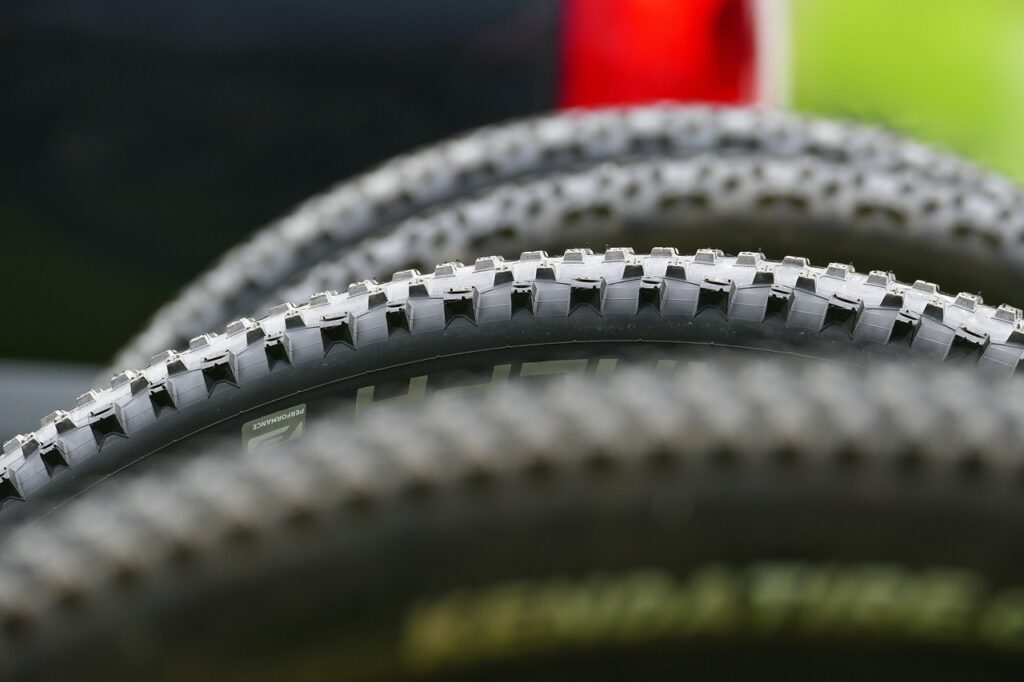
Switch To A Faster Gearing On A Mountain Bike
Lowering the rollings resistance has a great impact on your average speed, but you’ll soon notice that you run out of gears more quickly. A road bike gearing would be much more appropriate for achieving higher speeds. Fitting a road bike gearing to a mountain bike, is not something anyone can do. Because of compatibility problems between drive train series, you might need a new freehub (or new wheels), derailleur (front and back), cassette, chain wheel and crank.
Luckily, there are less drastic changes you do to your mountain bike. Firstly, you should check if there is an alternative cassette available with less teeth on the smallest cog. The smaller the cog, the higher your top speed. Please note that a smaller cog will wear faster because of the fewer teeth and thus smaller surface of contact.
Secondly, the best way to increase the top speed of a mountain bike, is to fit a larger front chain ring. Especially if you don’t have a front derailleur (1x drive train), this can easily be done. Keep in mind that a mountain bike frame has a maximum chain ring size that will fit, otherwise it might hit your chain stay. This size can often be found on the manufacturers website. Other factors that should be kept in mind when switching to a larger chain ring are: manufacturer and series; number of gears; mounting-type; offset (if your chain ring is not flat) and number of teeth.
After fitting a larger chain ring, you will need a longer chain.
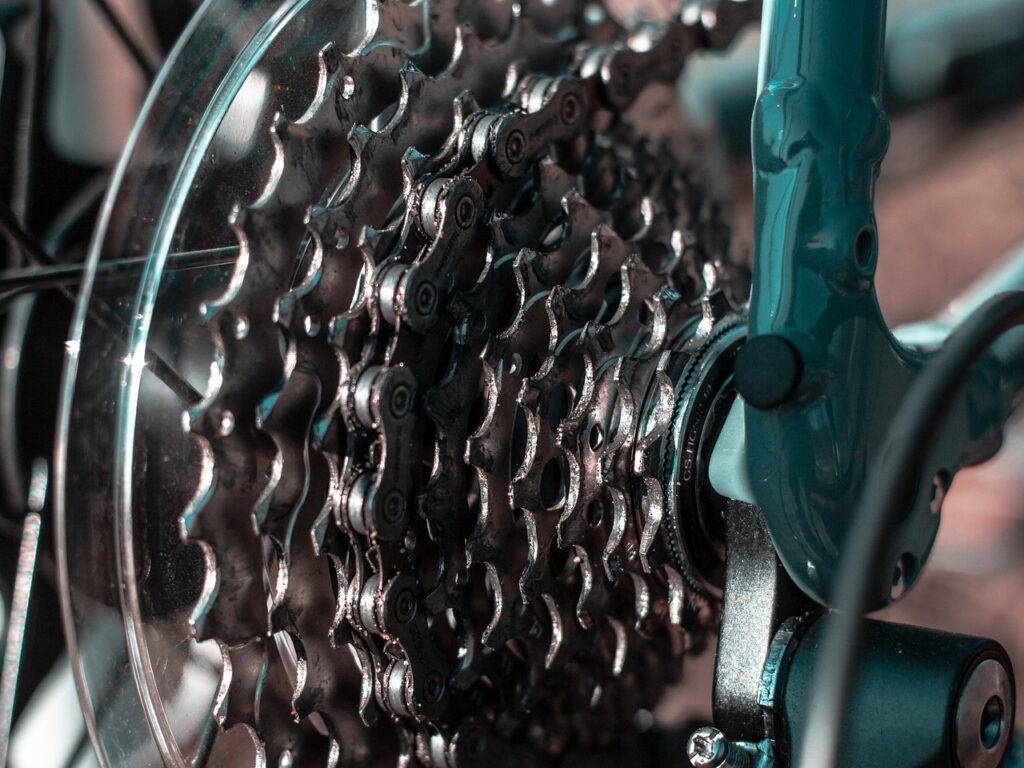
Change Your Riding Position On A Mountain Bike
We’ve established that the frame geometry of a road bike has been optimized for riding in a more stretched out and aerodynamic position. On a mountain bike however, you are in a more upright position which is great for keeping balance on rough terrain.
To change your riding position on a mountain bike from an upright to a more aerodynamic position, you can move your seat back, get a longer stem and lower your stem height. Alternatively, a more expensive option is to switch to a gravel bike handlebar which will drastically change your body position and lower your center of gravity.
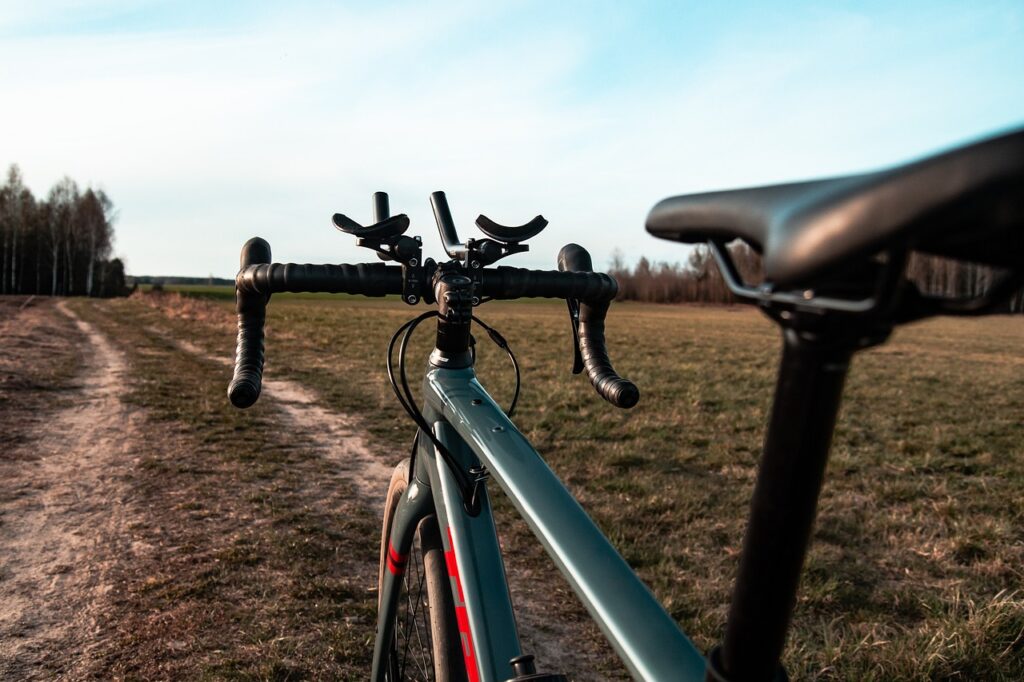
Please keep in mind that you should be careful with changing your riding position. Take some measurements before you start with modifying and do proper testing. An improper riding position can cause pain in parts of your body like your back, shoulders and arms.
Locking Up The Suspension Of A Mountain Bike
If the mountain bike you’re trying to convert to a road bike is a hardtail or a full suspension, you might have a lockout knob. Locking up the suspension is great for sprinting on a paved road as there will be no loss in energy through the shock absorbers; it will make road cycling more efficient.
If there’s no lockout knob on your suspension, then you might be able to adjust the compression of the damper to make it more stiff. If not, there is the option to switch to a rigid fork. They are lighter than the original fork and offer maximum stiffness. Depending on the material, a rigid fork costs between €150-400.
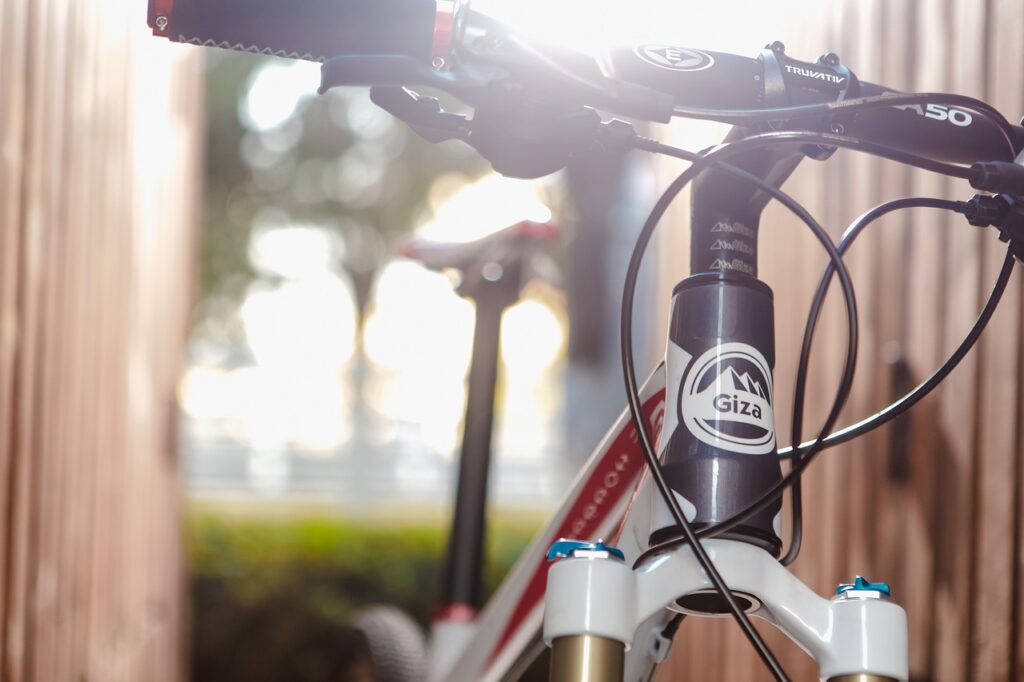
Alternative For Convert Mountain Bike To Road Bike
If you don’t feel like getting your hands dirty, or your converted bike is not what you had expected, a great alternative is a gravel bike. A gravel bike looks a lot like a road bike, but has a slightly different geometry and wider tires with more grip. They are built for long distance riding on road as well as off-road. It’s is not a full mountain bike and not a full road bike. If you want your gravel bike to lean more to a mountain or road bike, they are also quite easy to convert.
But if your budget doesn’t allow you to buy a new or second hand gravel bike, then you should definitely convert your mountain bike to a road bike.
Frequently Asked Questions
Can you use a mountain bike as a road bike?
A mountain bike can definitely be ridden on a paved road and used as a road bike. But because of the bike’s weight, gearing, tires and riding position, you won’t be as fast as you would be on a road bike.
How Do I Make My Mountain Bike Faster?
To increase the top speed of a mountain bike, you can do the following: get a larger front chain ring; increase the tire pressure and switch to tires with a lower rolling resistance.
Are road bikes faster than mountain bikes?
Road bikes are a lot faster than mountain bikes. Road bikes weigh less, have a faster gearing and are more aerodynamic.





